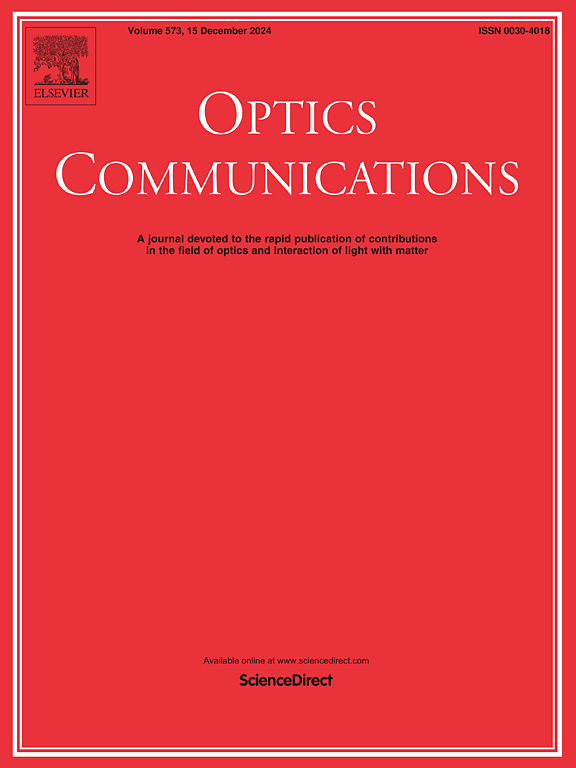Wavelength multiplexed optical dynamic encryption
IF 2.2
3区 物理与天体物理
Q2 OPTICS
引用次数: 0
Abstract
Optical encryption has recently attracted intensive research attention to meet the rapidly growing demand for information security. Various methods, such as developing precise algorithms and modulating multiple degrees of freedom in the optical field by using metasurfaces, have been studied to enhance information capacity, efficiency, and security. However, these methods often require a powerful computer configuration and consume significant energy, or they may encounter challenges in manufacturing and dynamic modulation. Here, by employing the multiplexing principle, we propose and experimentally validate a wavelength multiplexed optical dynamic encryption scheme to facilitate information encryption channels and security. Specifically, information is flexibly and dynamically encrypted within the Fourier domain of optical images and multiplexed in a parallel way with different wavelengths. Importantly, information security is further bolstered by the decryption requirement of region separation for the ciphertext image according to different wavelengths. This work represents a step forward for the optical encryption platform and may advance the investigation of information encryption.
波长复用光动态加密
近年来,为了满足快速增长的信息安全需求,光加密技术引起了人们的广泛关注。为了提高信息容量、效率和安全性,人们研究了各种方法,如开发精确的算法和利用超表面调制光场中的多个自由度。然而,这些方法通常需要强大的计算机配置和消耗大量的能量,或者它们可能在制造和动态调制中遇到挑战。本文利用多路复用原理,提出了一种波长复用的光动态加密方案,并通过实验验证了该方案的有效性。具体来说,信息在光学图像的傅里叶域中灵活动态地加密,并以不同波长的并行方式复用。重要的是,根据不同波长对密文图像进行区域分离的解密要求进一步增强了信息安全性。这项工作代表了光学加密平台向前迈进了一步,并可能推动信息加密的研究。
本文章由计算机程序翻译,如有差异,请以英文原文为准。
求助全文
约1分钟内获得全文
求助全文
来源期刊

Optics Communications
物理-光学
CiteScore
5.10
自引率
8.30%
发文量
681
审稿时长
38 days
期刊介绍:
Optics Communications invites original and timely contributions containing new results in various fields of optics and photonics. The journal considers theoretical and experimental research in areas ranging from the fundamental properties of light to technological applications. Topics covered include classical and quantum optics, optical physics and light-matter interactions, lasers, imaging, guided-wave optics and optical information processing. Manuscripts should offer clear evidence of novelty and significance. Papers concentrating on mathematical and computational issues, with limited connection to optics, are not suitable for publication in the Journal. Similarly, small technical advances, or papers concerned only with engineering applications or issues of materials science fall outside the journal scope.
 求助内容:
求助内容: 应助结果提醒方式:
应助结果提醒方式:


